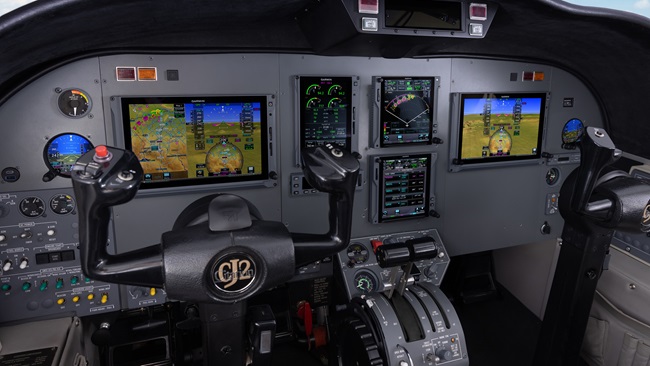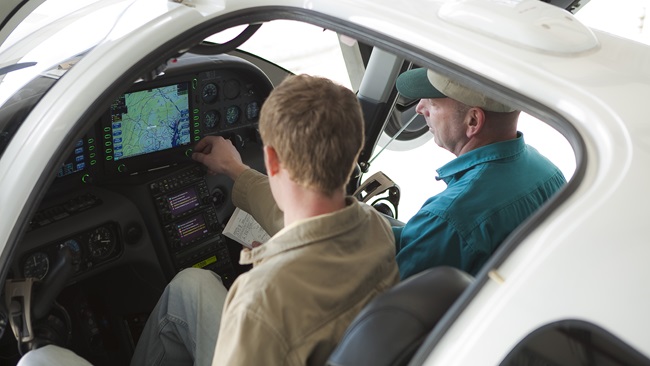Garmin GDL 51, 52 connect easily to ForeFlight
Sirius XM and ADS-B weather, traffic information at your fingertips
Garmin, SiriusXM Aviation, and ForeFlight have been working together to create an easy way for pilots to access weather and traffic information on their mobile devices in flight.
The portable options they have developed worked seamlessly for me on two flights. SiriusXM loaned me a Garmin GDL 51 and 52 to test with a complimentary SiriusXM Aviation weather subscription. I use ForeFlight on an iPad Mini 4, and when I launched the newest version of the EFB, the SiriusXM Aviation subscription appeared, and I connected to the GDL 51 and 52 (on separate flights) via Bluetooth.
The GDL 51 is a SiriusXM receiver, so a subscription is required to pull weather information into ForeFlight, Garmin Pilot, or other Garmin portable devices. I tested the GDL 51 on a flight from Florida to Maryland in my Cessna 170B at the end of October. The skies were perfectly clear, so I didn’t use the NEXRAD imagery, but the time-stamped METAR information proved useful. I like to check the winds at my planned destination to see if they remain as forecast or if they have changed in direction or velocity so that I can find an alternate with more favorable winds. The GDL 51 does not provide traffic data.
I used the GDL 52 during a flight in the Cessna 170 from Maryland to Tennessee over the Thanksgiving holiday.
The GDL 52 pulls in free Automatic Dependent Surveillance-Broadcast (ADS-B) weather and traffic as well as subscription-based SiriusXM Aviation weather. I pulled in data from both, and ForeFlight labeled the source of the information displayed. For example, METAR data for airports near the airplane were provided by ADS-B In, while data for airports farther away on my route were provided by SiriusXM Aviation. (ADS-B weather data relies on ground-based stations that have limitations, including line of sight, based on altitude and the aircraft's location, but SiriusXM Aviation's data is delivered by satellite. That's why the data for airports close to the aircraft's location showed ADS-B In weather and those farther away delivered SiriusXM Aviation information.) The weather information from both sources was time-stamped.
I had planned a southerly route to Tennessee to have more favorable surface winds, which I kept an eye on with the GDL 52. The southerly route also kept the flight in clear skies. Marginal VFR ceilings over the mountains just north of the route matched what was shown on ForeFlight’s flight category overlay. Up-to-date winds aloft information made altitude planning en route easy as I crossed mountains and then descended over lower terrain.
Traffic information is helpful, as long as ForeFlight’s “hide distant traffic” function is enabled so that your screen isn’t covered by black targets (airliners) that are tens of thousands of feet above you.
The flight to Tennessee took six hours, and the GDL 52 lasted about five hours, matching the battery operating time listed on Garmin’s website. A warning pops up on the ForeFlight screen when the unit’s battery is down to 20 percent. It wasn’t a problem to continue without the GDL 52 because I was in VFR conditions, with no weather between me and my destination near Nashville. However, had I been deviating around weather, I would have needed to plan in advance to alternate charging the GDL 52 and my iPad Mini 4 in my Cessna 170’s one power port.
Both units provided a level of luxury in the Cessna 170 that I’m not used to. Being able to check weather changes while en route, plan alternatives, and spot traffic (with the GDL 52) provides more time to make decisions and alter plans as needed. After flying with the units, particularly on long routes, it’s hard to go back to a cockpit without that information.
The GDL 51 costs $699, and the GDL 52 costs $1,199, but customers can receive a $200 rebate on either if they also purchase a SiriusXM Aviation subscription before Dec. 31, 2018. (SiriusXM Entertainment subscriptions are sold separately but work with both units.) In addition, AOPA members can enjoy a three-month trial of SiriusXM Aviation Weather and Entertainment with the GDL 52 and a two-month trial with the GDL 51 through Dec. 31, 2019. Members who buy a new SiriusXM Aviation subscription or eligible receiver can receive a free one-year AOPA membership; that offer has been extended through Dec. 31, 2019, as well.




